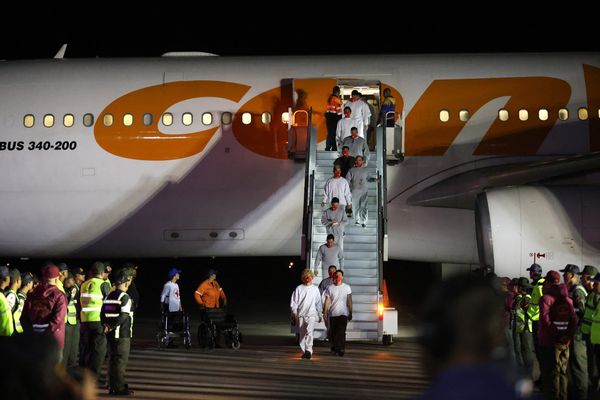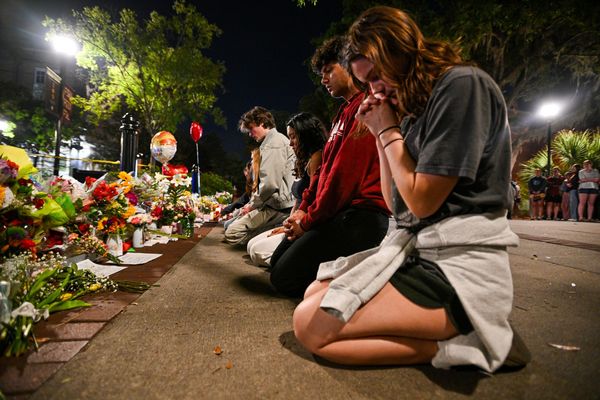
During a far-right terrorist attack in Norway in 2011, 77 people were killed: 69 at a summer camp on an island in the Tyrifjorden lake, another eight in a bomb blast outside Oslo’s parliament building. Two 2018 films – Paul Greengrass’s 22 July and Erik Poppe’s Utøya: July 22 – plunged audiences into the bloodshed. Edoardo Erba adopts a tangential approach for his two-hander Utøya, written in 2015 and now receiving its UK premiere directed by Sarah Stacey. The idea, Erba says, is to “imagine being on the side of the black hole, but not in it”. He elects not to name the perpetrator, shifting the emphasis away from a single bogeyman and on to a poisonous ideology.
On a tiny stage surrounded by the audience and bare except for a table and two chairs, Kate Reid and Marco Young alternate between playing three pairs of characters: Malin and Gunnar nervously await a call from their daughter, who only attended the summer camp at her father’s insistence; police officers Unni and Alf debate whether to disobey orders and head for the island; and siblings Inga and Petter speculate about the comings and goings of their oddball neighbour.
A gradual drip, drip of conversational banality works nicely, but the later introduction of soap opera elements (serial infidelity, a terminal illness) has an unbalancing effect. The play’s central weakness, though, is that none of the characters or performances are sufficiently differentiated from one another. Whether seething or shouting, each confrontation melts into the next.
One argument might be that in making, say, a xenophobic farmer virtually indistinguishable from an Islamophobic cop, Erba is showing how the bigotry behind the massacre is reproduced in subtler form throughout society. Othering is a recurrent motif: we hear about “the Moroccans”, “the Turks” and “blacks”. Even so, the dramatic colourlessness makes for an unrewarding theatrical experience. An identical power dynamic is replicated in each couple: one side righteous and indignant, the other shortsighted and law-abiding to a fault. Nuance is in short supply.
A pronounced, jagged crack in the table might symbolise the distance between the mainland and Utøya, or the chasm separating hope from hate. By the end of these 75 minutes, it comes to represent the gap between noble intentions and middling achievement.
At the Arcola theatre, London, until 31 August







